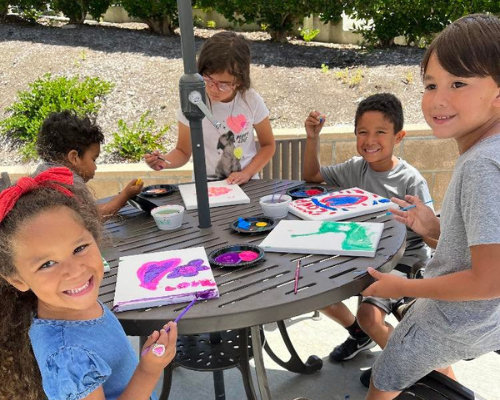Creating self-worth in children in a complicated world.
A mass school shooting in Texas. An ongoing war in Ukraine. An obsession with social media endlessly capturing our attention. These are just a few of the issues rising to the top of parents’ concerns about raising kids in the 21st century. But if we take a step back and a few deep breaths, we as adults can realize that perhaps we cannot change the world’s problems, but we can create change in our own households. We can offset difficulties that our kids may encounter later in life by looking for the good within troubling scenarios, providing positive reinforcement when our children express their feelings and by simply taking the time to listen.
Research indicates that understanding how children perceive themselves will help them to maintain a healthy outlook as they grow into adulthood. Self-worth and a strong sense of value can sound challenging to teach, but they develop through two straightforward activities: observing and communicating.
Parents and those who spend the most time with a child become the model for the skills a child will learn to overcome challenging situations. For everything from social interactions to processing feelings and emotions, these adults provide the examples the child observes and imitates.
When it comes to communication, parents or guardians also have the opportunity to help children identify their own feelings. This is complex — and requires parents and guardians to be capable of identifying feelings themselves — but the importance of communication and the identification of feelings goes a long way. As adults, we can help children understand that it is normal to experience big emotions such as anger, frustration and happiness, but how we express those feelings is what requires discipline. Feelings play an important role in a child’s perception of their self-worth, so when they understand their feelings and can communicate clearly, they are equipped with the ability to ask for help.
For example, if a child is having trouble with a classmate at school, it is normal to be distressed by the situation. If the parent can teach their child to write down, talk or even draw about their feelings — be it anger, sadness, frustration — the child can more easily identify how to navigate next steps with their classmate. This identification of feelings may take time for some children, depending on age or disposition, but remember that with practice, the communication will come.
Here are some tips and strategies to create self-worth in your child’s everyday life:
- Be intentional about talk. Make the time to talk to your child about their feelings. Instead of asking, “How was your day?” — an alternative could be “Tell me something that made you happy today” or “What is something where you had to really focus today?” Acknowledge what your child is saying and feeling, and even if you think it seems silly, remind yourself that this is their reality.
- Explore feelings in a fun way. For younger children, you can create a feelings chart using visual expressions tied to specific emotions in order to develop a better understanding. Children are so perceptive; they can pick up on facial expressions and even body language. For older adolescents, try creating a reflections page or emotions page where children can process strategies or actions that help them when they feel bored, alone, angry, frustrated or any other emotion.
- Respond, don’t react. Since learning is a lifelong endeavor, children will go through many seasons that require a response from us as parents. When parents weigh in, they consider the desired outcome of the interaction with a child. Responding takes into account the question of “What do I want them to learn from this?” — instead of the impulsive reaction that doesn’t put much thought into the outcome of the situation. We want to respond to children’s behaviors with a desired outcome in mind so that we help them to learn from their actions.
- Own your own mistakes. It may seem daunting, but you are the model for your child. If a child sees you stand accountable for your own mistakes, then you are letting them know that they can own theirs, too.
- Role play. When you have some downtime in the house, run different scenarios with your child. What would you do if someone took a ball from you? What can you do if you feel angry? In a mellow moment in a comfortable setting, children are able to think without distraction about what they can do in a stressful or worrisome situation.
In the end, we all want our children to see — through modeling, conversations and use of problem-solving skills — that they can get through anything. This learned proficiency of tackling big challenges through a series of learning moments is what a growth mindset is all about.
Servando Vera is executive director of Child & Youth Development at YMCA of Orange County.








Leave a Reply